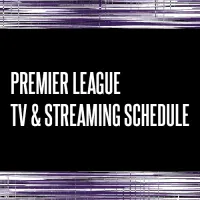It’s an honor to share an interview with not only an incredibly prolific author, a preeminent historian of soccer in North America, but also a true gentleman of the game and the history surrounding it, Colin Jose.
Jose has researched the history of soccer in both Canada and the United States for over 40 years and currently serves as the historian at the Soccer Hall of Fame in Vaughan, Ontario and as Historian Emeritus at the National Soccer Hall of Fame in Oneonta, New York. Jose has written nine books on the history of the beautiful game in North America including books on the NASL, the World Cup and soccer in Canada.
In the interview, I discuss with Jose the deep history of European clubs touring the States, their success with these early tours, the NASL and even get some thoughts from him regarding today’s soccer landscape.
Chula: In the past five years especially, the soccer landscape in North America seems to have grown tenfold. Leading this revolution has been the advent of technology which has provided soccer fans with HD broadcasts on satellite televisions from Europe’s top leagues. But second in the revolution just could be down to major European clubs touring the States and Canada in the summer. How big of a deal do you think this phenomenon is currently and is likely to become over the course of the next 10 years?
Jose: When I came to Canada over 50 years ago, TV was black and white, there was one Canadian channel (CBC) and if we were close to the border, we could get ABC, CBS and NBC on our antenna.
There might have been one soccer game shown each year, usually the F.A. Cup Final. Then came the NASL, which changed everything, hardly noticeable at first, but as time went by and Pele joined the Cosmos, things began to move. NASL teams held displays in shopping malls, often led by Ron Newman. And people took their families to soccer games because they could afford to while they couldn’t afford to go to baseball or football.
Ask Clay Berling or Lynn Berling of Soccer America. It was the beginning of where we are today. The kids that were attracted to the game back then form today’s fan base. The proliferation of TV channels, especially the sports channels with their hunger for sports to fill the time with, turned to soccer. So suddenly, sports fans that had never seen very much soccer before were able to watch and learn about, and follow the game on a regular basis. They got to know the teams and the players. Teams toured in the 50s, 60s and 70s, just as they do today, but the audience has grown thanks to TV. Suddenly games involving touring teams that used to draw 10,000 or 20,000 ethnic fans are attracting 60,000 and 70,000 fans from all walks of life. Manchester United first toured North America in 1950 and played 11 games. They came again in 1952 and played 12 games and there was nothing like it as many people showed up.
But there was one huge difference between touring teams then and now. Up until more recent years teams that toured did so at the end of the long hard European season. They came on vacation and played like they were on vacation. The club was rewarding them. But now they come as part of pre-season training. Now it’s no longer a vacation, now it’s dead serious. Fans in the United States are now subsidizing pre-season training for Manchester United, Chelsea and Barcelona. It’s a win-win situation for the European clubs on and off the field, something they couldn’t do in Europe. So it’s likely to continue. It’s allowing coaches time to experiment with players and combinations, and giving fans the opportunity to see the top players in the world.
Chula: Many new soccer fans believe the touring of European clubs in North America to be a new way for clubs to make a little extra money and gain exposure to a new audience. Those who might be a little older or more knowledgeable about the history of soccer know this isn’t true. Speak about the history of foreign clubs touring the US and maybe a reason or two as to why they decided to come over in the first place.
Jose: The first foreign club to visit the United States was an English team appropriately called The Pilgrims, who toured in 1905. Like most of the lengthy tours made before 1940, the Pilgrim tour began in Canada and ended in the U.S., with the teams arriving by ship and travelling principally by train. The Pilgrims, like the Corinthians that followed one year later, were made up of amateur players with the money to be able to travel overseas for over two months at a time. The second Pilgrim tour in 1909 took place exclusively in the U.S. and while the same two teams played the four tours before World War One, the floodgates opened after.
Between 1921 and 1940 teams visited the U.S. and Canada from Argentina, Austria, Brazil, Chile, Cuba, Czechoslovakia, England, Hungary, Italy, Mexico, Palestine, Scotland, Spain and Uruguay. In some cases they were only passing through on their way to and from South and Central America. In others, teams travelled from coast to coast. The only anomaly here is that between 1900 and 1940 no touring team visited the U.S. west coast. Were there teams on the west coast? Yes of course, with regular competition between teams in California, Washington State and British Columbia.
The reasons for most teams visiting were threefold. First it was a form of pioneering; an attempt to display the best the game had to offer to the people of the U.S. and Canada. Secondly, tours were often arranged to satisfy the thousands of immigrants who had poured into North America following World War One. And lastly, the players were being rewarded by the club.
The attraction of playing in both countries was that the organizers could put a big enough tour together to make enough money to subsidize the game here. So it was in the best interests of both national associations to work together.
Among the teams that came before World War Two were: Pilgrims 1905/1909; Corinthians 1906, 1911, 1924; Scottish F.A. (Third Lanark) 1921; Dick, Kerr Ladies (England) 1922; English F.A. 1926, 1931; Scottish F.A. 1927, 1935, 1939; Vienna Hakoah 1926, 1927; Nacional (Montevideo) 1927; Real Madrid (one game) 1927; Glasgow Rangers 1928,1930; Palestra Italia 1928; Welsh F.A. 1929; Preston North End 1929; Sabaria (Budapest) 1929; Kilmarnock 1930; Hungaria (MTK) 1930; Marte (Mexico) 1930; Sportivo (Buenos Aires) 1930; Glasgow Celtic 1931; Velez Sarsfield (Buenos Aires) 1931; Racing Club Madrid 1931; Audax Italiano (Santiago) 1933; Botafogo (Rio de Janeiro) 1936, and Charlton Athletic 1937.
Chula: With such a rich history of foreign clubs touring North America, just how successful were these early tours?
Jose: Obviously some were more successful than others. In particular the tours made by English and Scottish clubs were more successful considering they already had a built-in following.
Chula: Just how well attended were the tours and did the foreign clubs usually emerge victorious?
Jose: Most tours before 1940 were successful to a certain degree, and often drew large crowds, much as they do today. In particular tours by Scottish clubs were hugely successful as thousands of ex-pats turned out, not only to see them play, but to welcome them to the cities they played in. The Scots often had more trouble with the hospitality than with the opposition. Yet two of the most successful tours were those undertaken by the Austrian team Vienna Hakoah in 1926 and 1927. This was a team made up entirely of Jews, and the Jewish diasporas welcomed them with open arms. One game in New York City drew 46,000 fans, and for years this stood as the largest attendance for any soccer game in the United States. With rare exceptions the foreign clubs emerged victorious often going unbeaten and running up large scores against the best opposition.
The touring teams rarely played one another, as they do today, but played local all-star teams.
Chula: Corinthian F.C. was a successful English club during the first part of the 1900’s yet many modern football fans in North American know very little about the historic club. What reason and or reasons exist that make Corinthian virtually unknown today? Why weren’t they able to sustain any success to emerge to the upper echelon of English football in more modern times?
Jose: The Corinthian Football Club was formed in London in 1882 with the intention of developing players for England’s national team, who were constantly being beaten by Scotland. English teams played the “dribbling” game, while with the Scots it was more about short passing. It was a strictly amateur team and, at first, played only other amateur teams and refused to join the Football League or to compete in the F.A. Cup. It is also claimed that there was an unwritten law that only public school and university men should be admitted as members, and in those days that meant that you had to be of independent means. In other words, wealthy. The Corinthians toured the world, spreading the football gospel, so to speak, and toured South Africa as early as 1897.
They first came to North America in 1906 opening their tour in Montreal and playing six games in Canada before crossing the border into the United States where they played another eleven games in places such as Chicago, Cincinnati, Cleveland, Philadelphia, New York, Newark, Fall River and Boston. They beat New York 18-0 but lost 3-0 to Fall River and were held to a tie in Boston and in the small Canadian town of Seaforth, Ontario.
A second tour took place in 1911, but it was principally in Canada and this time the Corinthians went all the way to the west coast playing in Vancouver, Nanaimo and Victoria, before heading back east. The Corinthians were only beaten once, by Toronto early in the tour, and held to a tie in Nanaimo. At the close of the tour, games were played in New York, Newark and Philadelphia — who were beaten 19-0.
A third tour took place in 1924, once again mostly in Canada, but by this time the amateur game in England had been overshadowed by the professional game, which saw the rise of such famous teams as Aston Villa, Blackburn Rovers, West Bromwich Albion, Sheffield Wednesday, Newcastle United and Sunderland. This tour was not the success of the first two tours and the Canadian Association lost a lot of money on it. The Corinthians played 17 games and lost to Toronto, Manitoba, Calgary, Vancouver Island, United Weston (Winnipeg) and New Ontario, before once again crossing the border and playing in Philadelphia, Brooklyn and Haverford, PA. Eventually, in 1939, the Corinthians merged with the Casuals to become the Corinthian-Casuals.
Chula: Back to modern times, Manchester United and Barcelona (among others) are both set to again make appearances in North America this summer. How much impact do you think their visits have on the growth of MLS clubs?
Jose: Looking at the average attendance in MLS since clubs like Manchester United, Chelsea, Barcelona and A.C. Milan have been coming to the U.S., it would appear to me that while there is some impact it is not significant. The problem MLS has in my opinion lies with the so called “Euro Snobs.” That is those soccer fans who love and follow the Premier League, La Liga, Serie A and the Bundesliga, but who feel that MLS simply doesn’t measure up.
They will go and watch the big clubs when they visit, but are not interested in paying to watch MLS.
Chula: Lastly, besides the NASL and now MLS, have soccer fans in North America experienced any additional (positive) ripple effects because of the early tours we’ve been discussing?
Jose: Starting in 1960 a league known as the International League began operating in New York. This league was made up of well known teams from Europe and South America (with occasional U.S. and Canadian teams), here for the summer playing each other mostly at the Polo Grounds. This league continued to operate in the summer months of 1961-1965. So it was reasonably successful, but eventually folded.
Special thanks to Colin Jose for his time and dedication to all things soccer. To learn more about Colin Jose and the history of soccer in North America, visit his website History Of Canadian Soccer as well as his essays on American soccer history.














